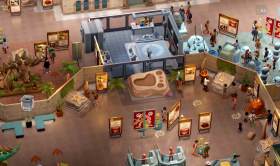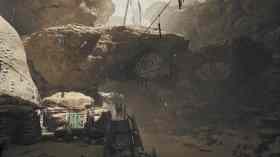Life in Reterra is exceedingly pleasant to look at. It’s vibrant and eye-popping, with rich colours illustrating its many maps and buildings. There’s a real sense of whimsy in the board game’s art, and it’s that sense that buoys rounds of gameplay, and makes it such an appealing strategy game for players of all ages.
While the game is co-designed by Eric M. Lang, known for complex titles like Blood Rage and Cthulhu: Death May Die, this is a (perhaps surprisingly) pared back strategy game, with a focus on simplicity and good vibes. The premise is this: after the apocalypse, you and up to three other players must rebuild the Earth. To do so, you’ll select tiles from a random array, each of which has special terrains, relics, or gears on which you can place buildings or inhabitants. Once each player has a 4 x 4 grid of 16 tiles, the game is over, and players score their efforts.
Within that process, there’s all sorts of complications that define the ‘easy-to-learn, hard to master’ strategy of the game. Before I dive into the ins and outs that make Life in Reterra so satisfying, here’s what you need to know about set up.
Life in Reterra: How to play and set up
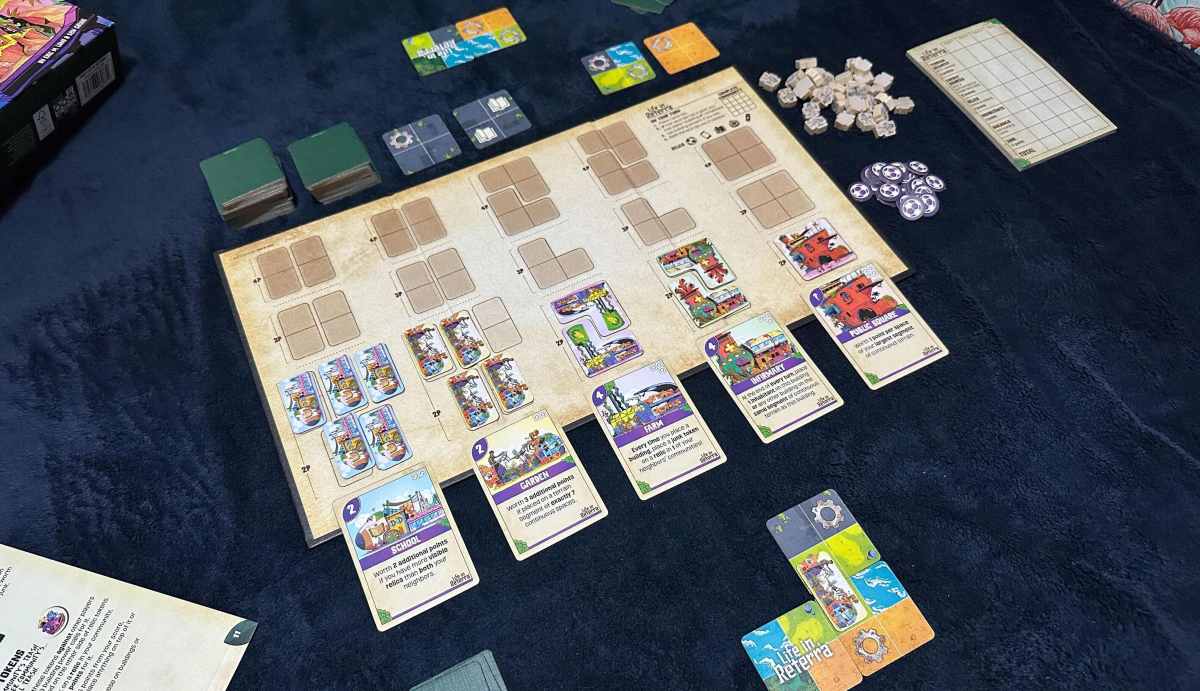
Set up for Life in Reterra is very simple, thanks to a concise rule book with a very refined approach. Too often, rule books will hand-hold far longer than necessary, holding players back from making their own choices and assumptions. In Life in Reterra, you get a simple introduction to laying out the game’s building sets, and then the rule book basically says: “you have enough knowledge now, go figure it out.”
And it’s exactly right. At a certain point, rules meld together, and the best way to learn to play a game is just to start. Life in Reterra is fantastic in that regard, as gameplay is well-designed and easy to understand at first glance.
It’s basically ‘grab tiles, place tiles. Certain tiles have fun effects. Establish buildings on these tiles, reap the benefits.’ As you play through the game, you’ll learn more about the strategy behind gameplay, and figure out exactly what you’re aiming to accomplish.
Strategy for everyone
After a simple setup, Life in Reterra lets you build at your own pace, and work out what your goals are. Final scores are based on set criteria – including having consecutive terrain tiles of the same type, establishing buildings, placing special tiles, having relics on your 4 x 4 space, and having inhabitants occupying your land – so you’ll want to decide which goals to pursue.
You’ll also need to figure out how to deploy buildings to take full advantage of their abilities. A School requires two gears to build, but each School is worth two additional points if you have more visible relics on your 4 x 4 than both your nearest neighbours (other players).
Read: How does Gloomhaven: Buttons & Bugs fare as an in-flight experience?
A Garden is worth 5 points as long you can place it on a continuous terrain segment of exactly seven spaces, no more or less. When you’re able to place a Farm (which requires three gears) you may place a junk token on one of your neighbours’ relics every time you place a building.
All these building abilities interrelate, so if you’ve got enough head space to work out strategy quickly, you can maximise your building to ensure you’re able to get the most points, and beat your fellow players.
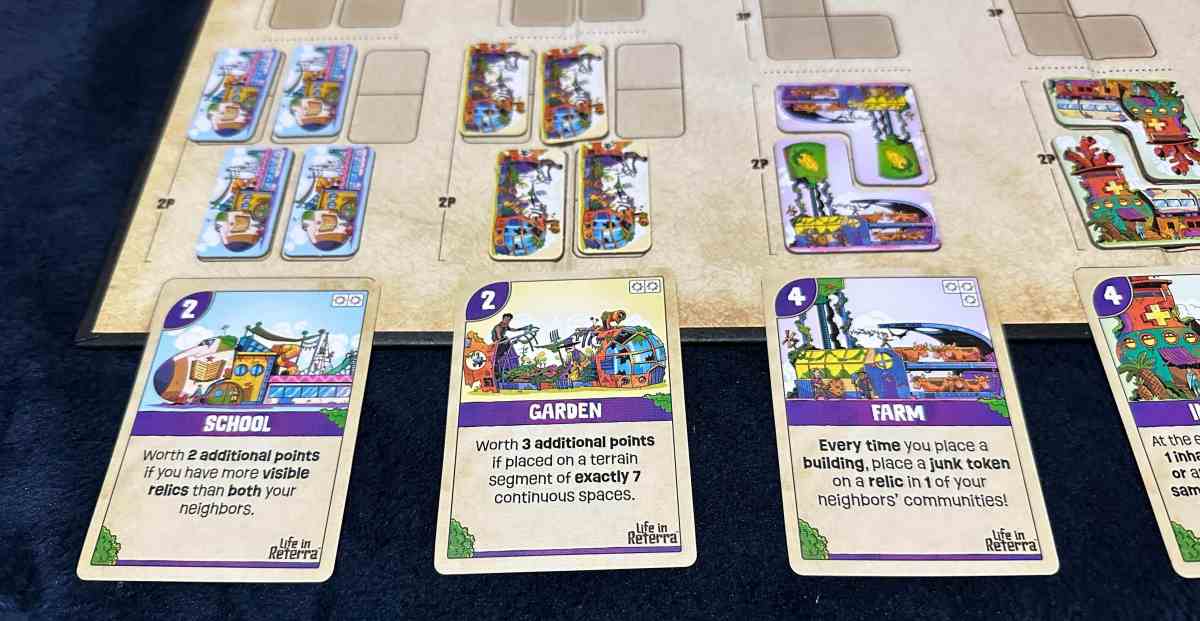
In my first round of Life in Reterra, I pursued a strategy revolving around the Garden building, and the Infirmary. With patience and strategy, I was able to place the Garden on a 7-segment terrain, and I placed the Infirmary early to maximise its abilities – at the end of every turn, I could place one inhabitant on the Infirmary (or any other building on the same segment of land) to gain one extra point every turn.
My opponent went for the alternative strategy of placing schools, and grabbing relic tiles to boost their final score. With alternative strategies working, we were both able to achieve ample points (I won, for the record), while gaining more of an understanding about the potential of sabotage.
In a competitive match, I could have recognised my opponent’s relic-based strategy, and deployed the farm to “junk” their relics every time I played a new building. I could’ve played the long game, and attempted to place the Public Square on the largest segment of continuous terrain on my map (at the risk of losing out on other points).
While Life in Reterra is simple by design, the longer you play, the more you’ll recognise the deeper strategy flowing beneath it. And once you’ve recognised that strategy, you can also change the flow of the tide by switching up your building sets.
A mind for replayability
In your first game of Life in Reterra, you’ll have access to one set of buildings, each with two different abilities (there’s purple and orange sides for every card). From your second round, you can move onto two additional card sets with new buildings, and new abilities – each more powerful than the last.
With three sets in the game, you can keep rounds of Life in Reterra consistently fresh, even if you’re playing with the same group of people. That level of replayability means you can keep coming back for more, working out new moves every time you play.
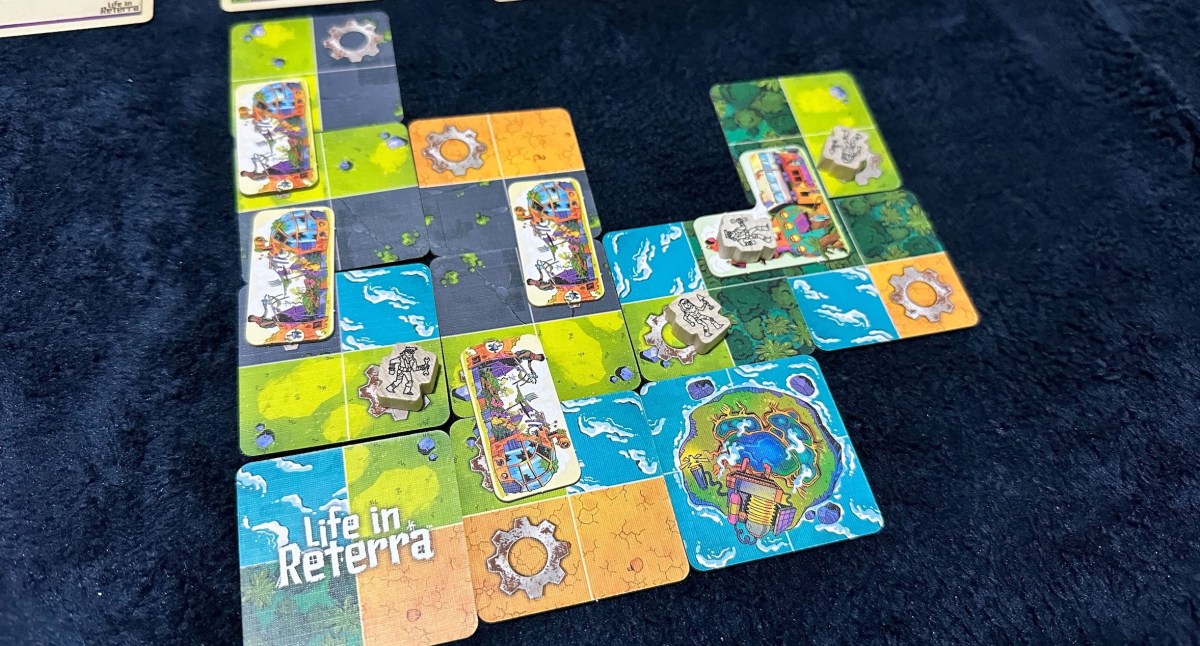
Seasoned veterans of tabletop gaming may find this process less appealing, as the game’s strategy seems geared more towards young players, but there’s still pleasure in perfecting your grids, and rounding out your tile placements with clever thinking.
While Life in Reterra is on the lighter side of strategy games, it remains a wonderful addition to the genre – and it could serve as an inspiring entry into tabletop gaming for younger players, or those just getting into the hobby. We need more welcoming, approachable games for beginners, and Life in Reterra fills that much-needed space.
Four stars: ★★★★
Life in Reterra
Designer(s): Ken Gruhl, Eric M. Lang
Publisher: Hasbro
A copy of Life in Reterra was provided by the publisher for the purposes of this review. GamesHub reviews are rated on a five-point scale.




